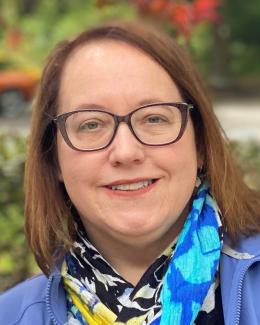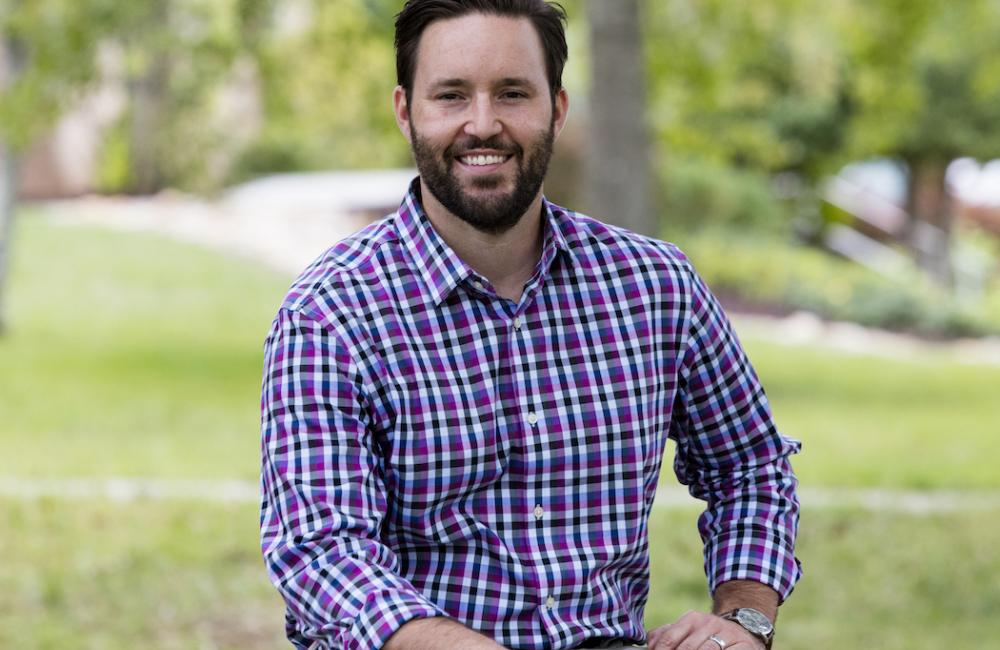November 1, 2017 - Adam Witt’s career path has followed some twists and turns, much like the rivers he studies. But the diversity of his professional experience is a boon to his work as he looks for new ways to harness an ancient energy source: water.
Witt, a hydropower systems research engineer, seeks a better understanding of waterways and how they may be used more efficiently and sustainably as a renewable energy source. He and others in ORNL’s Water Power Program see that future in small, modular hydropower projects.
Most existing hydropower plants are at least 50 years old and very large in scale, generating enormous amounts of electricity using giant turbines. They are also considered critical infrastructure for flood control, navigation, water supply, irrigation, and energy storage. So why not build more of them? It comes down to construction cost, licensing complexities, and environmental impact. Those are the areas that Witt seeks to innovate.
“Conventional projects are expensive to build now and would have complex and potentially significant environmental impacts. You’re also looking at a 5-year minimum to navigate the federal licensing process, and there’s no guarantee you’ll receive a license at the end. No one wants to invest in that kind of a project with that kind of risk right now,” Witt said.
“That’s why we’re looking at small modular hydropower. Figuring out a way to build projects at a lower cost with less environmental disturbance while retaining the energy benefits of hydro is the ultimate challenge,” Witt said. “We’re trying to advance the science that informs small hydropower development and siting, and we’re working with industry to create and test new engineering concepts and technologies that are compact, low-impact, modular, and scalable in nature.”
For instance, Witt and his colleagues know that if you can classify similarities across different watersheds, it may be possible to standardize project assessment, design, and regulatory review, avoiding expensive custom analysis for each location.
In the technology area, ORNL is studying new materials for hydropower and the use of additive manufacturing to create molds for things like more natural-looking structures allowing fish to migrate around dams, and compact, lightweight turbine components, Witt noted. “We’re looking at innovative ways to develop machines and structures that are lower cost, use different kinds of materials, and incorporate advanced functionality,” he said.
A detour through the business world
Time spent outdoors as a child—in Boy Scouts and with his family—nurtured Witt’s curiosity about the natural world and how things work. He grew up in Colorado and Minnesota and was the first of his family’s 14 children to pursue a science degree.
He studied physics and played football at Carleton College in Minnesota. Upon graduation in 2006, Witt opted to defer graduate school and instead pursue work in the business world—taking a position as an account executive for an insurance company and eventually moving to San Francisco. He excelled at the job but felt he was drifting from his true calling: he wanted back in the science field.
Witt found an opportunity to pursue a PhD in civil engineering at the University of Minnesota under a fellowship with the Hydro Research Foundation that would grant him 3 years of funding to study water quality downstream of hydropower projects.
“I was visiting old friends in Minneapolis while trying to decide if I should apply for the fellowship, and on a whim, they took me to a poetry reading by a former professor,” Witt said. “It just so happened that one of the poems read that night was about nostalgia at hydroelectric dams. I remember thinking, ‘What are the odds? I should probably just do it.’”
And so he did. Working with the foundation and networking at conferences was also a great way to get to know researchers at other institutions, including ORNL. After earning his PhD in 2014, Witt was hired as a postdoctoral research associate at the lab, and then he was hired as full-time R&D staff in November 2016.
One of the advantages of working at ORNL is “the capacity to work on big problems with smart people—things that are not solved overnight or in a year or maybe even 5 years,” Witt said. “We have people with a strong industry background, utility experience, some with solid DOE knowledge and others with deep expertise in aquatic science, fish biology, and fluid modeling.” Having that holistic perspective is not something of which a lot of research groups can boast, he noted.
It takes that kind of expertise to steer hydropower to new concepts, such as the idea that strategically installing new, small hydro facilities could improve the health of a watershed while providing distributed hydropower, Witt said. As he and his colleagues continue to innovate, they expect to leverage high-performance computing for modeling and materials science both to create new kinds of projects and to improve the performance of existing projects.
ORNL’s hydropower research is sponsored by DOE’s Water Power Technologies Office within the Office of Energy Efficiency and Renewable Energy. ORNL is managed by UT-Battelle for DOE’s Office of Science, the single largest supporter of basic research in the physical sciences in the United States. DOE’s Office of Science is working to address some of the most pressing challenges of our time. For more information, please visit energy.gov/science.



